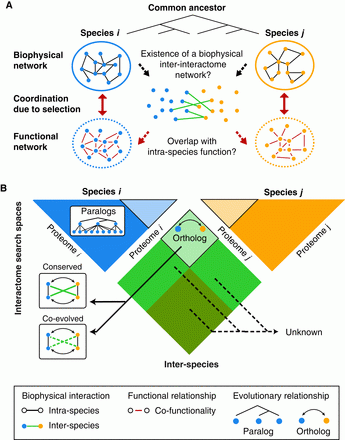An inter‐species protein–protein interaction network across vast evolutionary distance

Zhong Q, Pevzner SJ, Hao T, Wang Y, Mosca R, Menche J, Taipale M, Taşan M, Fan C, Yang X, Haley P, Murray RR, Mer F, Gebreab F, Tam S, MacWilliams A, Dricot A, Reichert P, Santhanam B, Ghamsari L, Calderwood MA, Rolland T, Charloteaux B, Lindquist S, Barabási AL, Hill DE, Aloy P, Cusick ME, Xia Y, Roth FP, Vidal M, In cellular systems, biophysical interactions between macromolecules underlie a complex web of functional interactions. How biophysical and functional networks are coordinated, whether all biophysical interactions correspond to functional interactions, and how such biophysical‐versus‐functional network coordination is shaped by evolutionary forces are all largely unanswered questions. Here, we investigate these questions using an “inter‐interactome” approach. We systematically probed the yeast and human proteomes for interactions between proteins from these two species and functionally characterized the resulting inter‐interactome network. After a billion years of evolutionary divergence, the yeast and human proteomes are still capable of forming a biophysical network with properties that resemble those of intra‐species networks. Although substantially reduced relative to intra‐species networks, the levels of functional overlap in the yeast–human inter‐interactome network uncover significant remnants of co‐functionality widely preserved in the two proteomes beyond human–yeast homologs. Our data support evolutionary selection against biophysical interactions between proteins with little or no co‐functionality. Such non‐functional interactions, however, represent a reservoir from which nascent functional interactions may arise.
Molecular Systems Biology,
2016, 12, 865
Pubmed: 27107014
Direct link: 10.15252/msb.20156484
